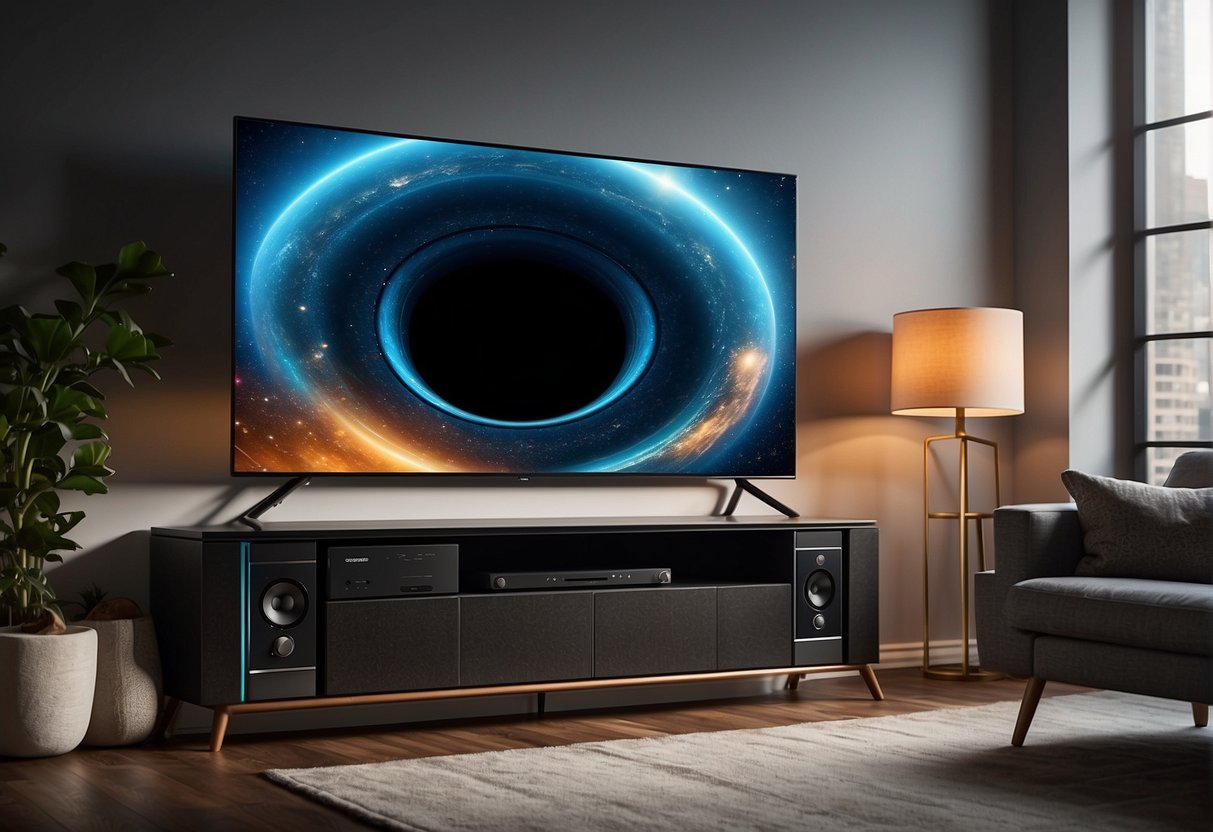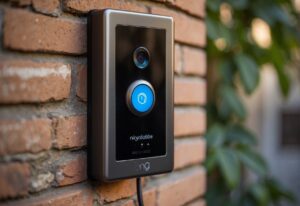Wireless surround sound systems have revolutionized home entertainment by offering a seamless and immersive audio experience without the clutter of cables. These systems use wireless technology to connect each speaker to the sound source, such as a TV, providing a clean setup that enhances the aesthetic of any living space.
The absence of wires does not compromise the sound quality; in fact, many wireless systems deliver high-fidelity audio that can rival traditional wired systems.
When considering a wireless surround sound system for a TV, design and ease of setup are vital. Users look for systems that not only deliver great sound but are also simple to install and use.
The connectivity options are equally important; with Bluetooth, Wi-Fi, and sometimes proprietary wireless connections available, a system should offer a reliable and intuitive user interface that facilitates smooth operation.
Additionally, prospective buyers should assess their needs and budget carefully to select a system that offers the best value without unnecessary extravagance.
Key Takeaways
- Wireless surround sound systems provide high-quality audio with the convenience of a wire-free environment.
- The design, connectivity, and ease of setup are crucial factors when selecting a wireless surround sound system.
- It’s essential to choose a system that aligns with individual needs and budget while ensuring straightforward maintenance.
Understanding Wireless Surround Sound Systems
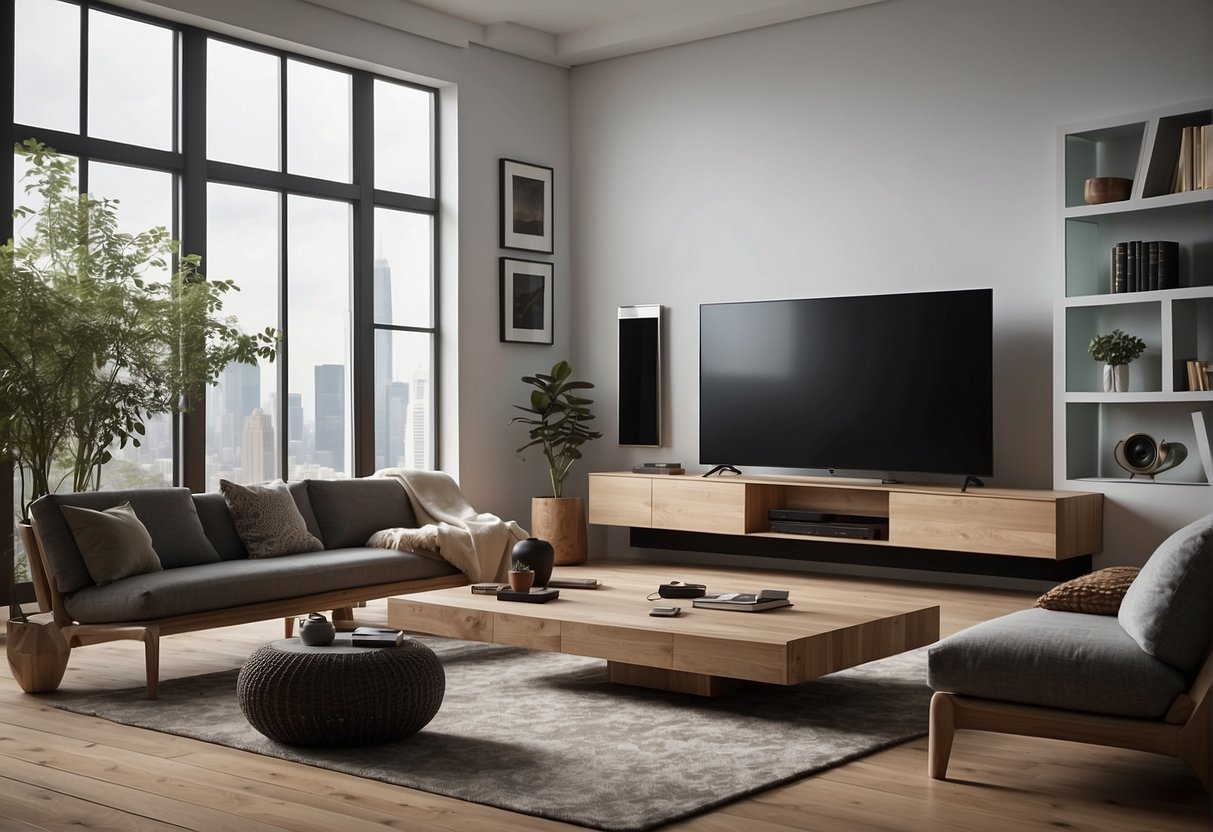
Wireless surround sound systems revolutionize the home theater experience by eliminating the need for extensive wiring while providing immersive audio.
Components of a Wireless Surround Sound System
Wireless surround sound systems typically consist of multiple elements that work together to create a comprehensive audio environment. The primary components include:
- Soundbar: Acts as the central hub, usually containing front left, center, and right speakers.
- Wireless speakers: These are the surround speakers placed around the room to deliver sound from different angles.
- Wireless subwoofer: Provides bass frequencies, enhancing the depth of the sound.
- Transmitter: A device within the soundbar that sends audio signals to the speakers and subwoofer.
The integration of these components can vary, with some systems embedding the transmitter directly into the soundbar, while others may have a separate unit.
Working Principle of Wireless Systems
The working principle of wireless surround sound systems is based on transmitting audio signals without physical cables. Here’s a concise explanation:
- The soundbar receives audio input from the TV or other devices.
- It then processes the audio and wirelessly transmits it to the surround speakers and subwoofer using radio frequencies, infrared, or Wi-Fi.
- Each wireless speaker and the subwoofer have built-in receivers that catch these signals and convert them back into sound.
This setup ensures a clutter-free home theater, while still providing the enveloping sound that’s expected from traditional wired systems.
Evaluating Sound Quality and Audio Technologies
When considering a wireless surround sound system for your TV, audio quality is often assessed by examining audio formats and performance criteria. Let’s delve into how these factors contribute to an immersive audio experience.
Audio Formats and Their Implications
Dolby Atmos and DTS are leading audio formats that offer immersive surround sound, often found in home entertainment systems.
Dolby Atmos, renowned for its capacity to deliver 3D spatial audio, enhances the realism of the sound by adding height channels, allowing sounds to be perceived from overhead.
Similarly, DTS supports object-based audio, granting flexibility in sound presentation to match the listener’s environment.
Both formats aim to create an expansive sound field that goes beyond traditional channel-based audio found in Dolby Digital Plus, enriching the viewing experience with more nuanced and dynamic audio.
Criteria for High-Quality Audio Performance
When assessing high-quality audio performance for wireless surround sound systems, one must consider several criteria:
- Clarity: The sound should be crystal clear, allowing for the effortless distinction of individual sounds and dialogue.
- Balance: Audio across frequencies must be well-balanced, with no overpowering bass or treble.
- Detail: Finer sound details should be audible, contributing to the depth and richness of the audio landscape.
These performance indicators help ensure that the audio quality delivered by the system meets the expectations of high-quality audio standards, resulting in a truly immersive audio experience.
Design and Setup Considerations
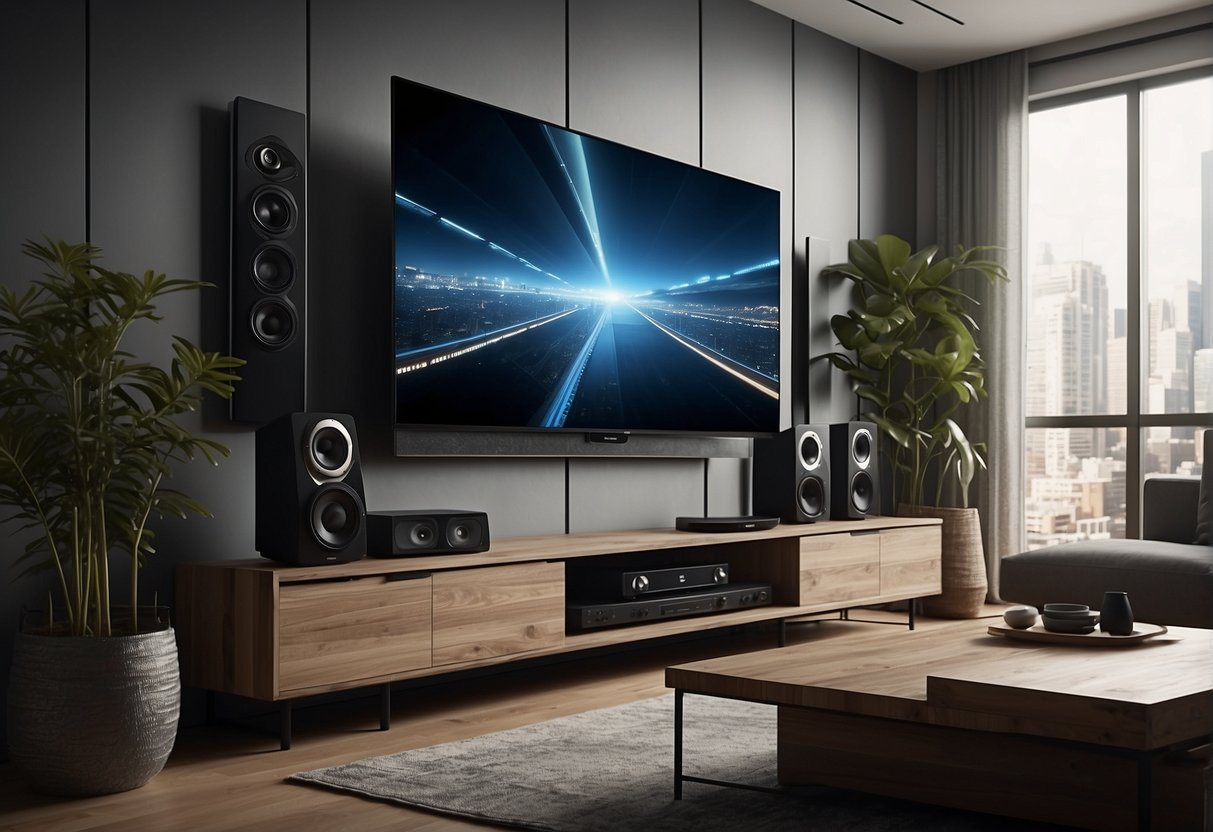
When designing a wireless surround sound system for a TV, it’s crucial to consider spatial constraints and strategic speaker placement to achieve an optimal soundstage. A carefully planned setup enhances the immersive experience of a home theater system.
Spatial Planning for Audio Equipment
The space where the audio equipment will reside dictates the arrangement and number of components, such as up-firing speakers, for an effective theater sound.
Home theater systems typically require a clear center channel area directly below or above the TV for dialogue clarity, and ample room on either side to accommodate left and right channels.
In larger rooms, additional satellite speakers may be placed for a fuller soundstage, whereas in smaller spaces, one may opt for a soundbar that simulates surround sound to avoid clutter.
Installation Tips and Speaker Placement
The listener’s position is central to speaker placement.
Up-firing speakers should be positioned such that they reflect sound off the ceiling, creating a sense of verticality in audio output.
For a more enveloping experience, rear speakers are best placed slightly behind and angled towards the seating area.
To maximize the soundstage, ensure that no furniture obstructs the speakers’ pathways, and use mounts or stands to position speakers at ear level when listeners are seated.
Each speaker’s distance from walls and corners can also affect sound quality; typically, a few inches away helps to reduce unwanted reverberation.
Wired vs Wireless Systems
When evaluating surround sound systems for TVs, the distinction between wired and wireless systems is central, largely influenced by their performance capabilities and the impact on room aesthetics.
Performance Comparison
Wired surround sound systems typically provide a more reliable connection due to the direct physical link between components.
They ensure minimal latency, which is the delay between a source generating an audio signal and the sound emanating from the speakers, resulting in a synchronized audio-visual experience.
In contrast, wireless systems have advanced to offer high-quality audio transmission with the convenience of fewer cables, but they may be subject to interference from other wireless devices, which can potentially affect the sound quality.
| Feature | Wired Systems | Wireless Systems |
|---|---|---|
| Connectivity | Direct, stable cable connections | Depends on Wi-Fi/Bluetooth |
| Latency | Lower | Potentially higher |
| Interference | Minimal | Possible from other devices |
Convenience and Aesthetics
Wireless surround sound systems score high on convenience, as they reduce the amount of cables and clutter typically involved in setting up a home theater.
They offer a sleek and modern look, often preferred by homeowners keen on maintaining a minimalist decor.
In contrast, wired systems require strategic cable management to maintain a neat environment, which can be a cumbersome process.
Although there’s the drawback of visibility of wires, the trade-off comes with the assurance of consistent connectivity.
Connectivity Options and User Interface
The right wireless surround sound system should offer a seamless integration with your TV setup. This section breaks down the varieties of connectivity options available and how they contribute to user interaction and accessibility.
Exploring Different Connectivity Technologies
Modern wireless surround sound systems leverage a variety of connection technologies to ensure compatibility with most TV setups.
Bluetooth and Wi-Fi are standard for wireless audio streaming, with many systems supporting Bluetooth 5 for a more robust and efficient connection.
For direct, wired connections, HDMI (including HDMI ARC) and optical inputs are common, ensuring high-quality audio transmission from the TV to the sound system.
Some models also come with USB ports for playing media from external devices.
- Bluetooth: Allows easy pairing and wireless audio streaming from mobile devices.
- Wi-Fi: Enables high-resolution audio streaming and support for multi-room setups.
- HDMI ARC: Simplifies the connection with a single cable for audio and control signals.
- Optical: Provides a simple and high-quality digital connection to the TV.
On the networking side, an Ethernet port may also be available for a stable wired internet connection, enhancing streaming capabilities from services like Spotify Connect.
Ease of Control and Access
The user interface on a wireless surround sound system must be intuitive, granting the user easy management of the system.
A dedicated remote is typically included, but many systems also offer compatibility with voice assistants like Google Assistant and Alexa for hands-free control.
Additionally, built-in support for Airplay, Chromecast, and Apple Airplay 2 allows for straightforward streaming from compatible devices.
Selecting a System for Your Needs
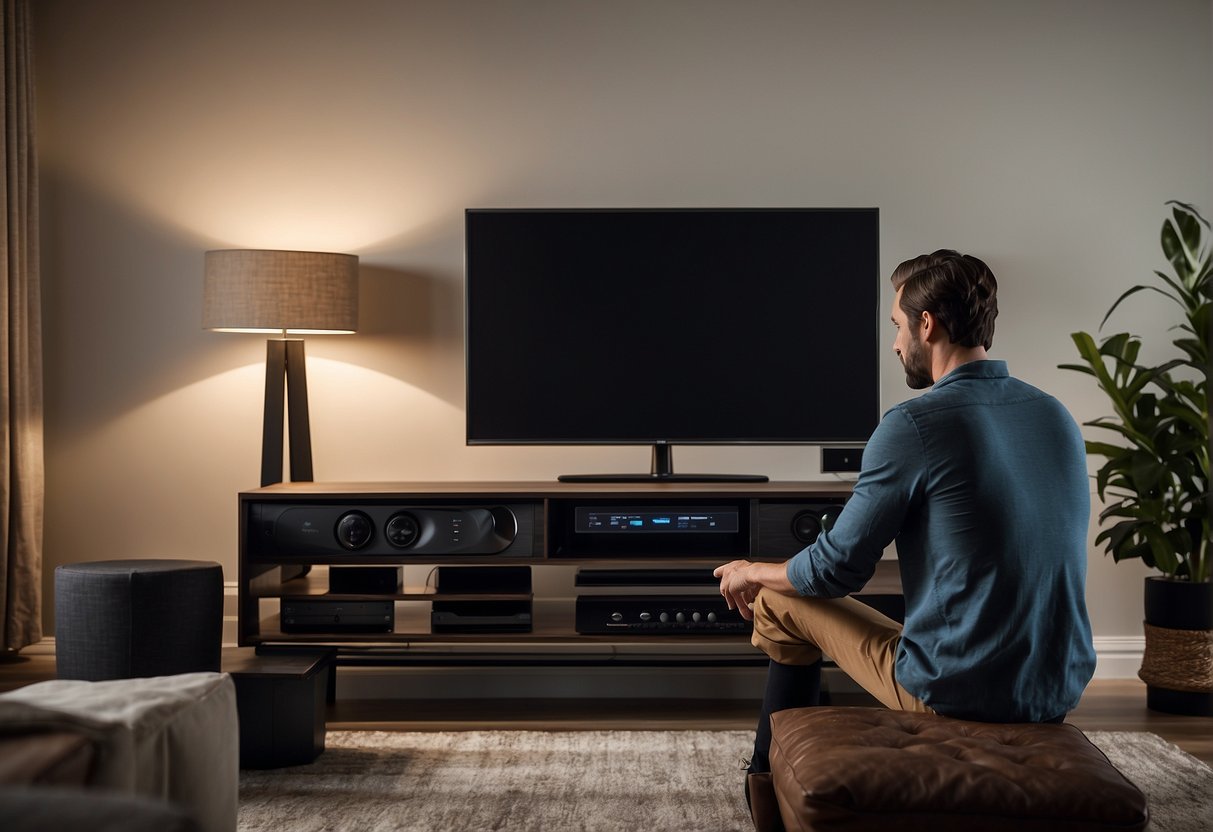
When selecting the right wireless surround sound system for your TV, it’s important to understand the various offerings tailored to different use cases. You should also know the features crucial for an immersive audio experience.
Whether you’re a movie enthusiast or a gamer, the choice of a system will significantly impact your home audio experience.
Best Picks for Different Use Cases
Movies and Home Entertainment:
For those looking to recreate a cinema-like experience, a system like the Sony HT-A7000 offers a 7.2 channel surround sound that envelops the viewer in audio from every angle.
Alternatively, a 5.1 system such as the Vizio M51ax-J6 M-Series might be suitable for smaller rooms while still providing a rich, cinematic sound.
Gaming:
Gamers seeking precision audio to track in-game sounds should explore options like the JBL Bar 9.1, which includes detachable speakers to customize the soundstage to match gameplay movements and directional sound.
Music:
Audiophiles who prioritize music fidelity can benefit from the Sonos Arc combined with the Sonos Sub, as these components are engineered for clear, rich stereo sound even at high volumes.
What to Look for in a System
Audio Quality:
Pay attention to the audio codecs supported by the system, such as Dolby Atmos or DTS, which can significantly enhance the clarity and dimensionality of sound for both movies and music.
Connectivity:
Look for systems with versatile connectivity options, including Bluetooth, Wi-Fi, HDMI ARC, or even optical inputs, to ensure compatibility with a wide range of devices.
Ease of Installation:
Consider the ease of setting up the system. A soundbar with a wireless subwoofer like the Sony HT-A9 is typically straightforward to install without the need for running cables across the room.
Brand and Compatibility:
Choose a system from a reputable brand such as Sony, Samsung, Sonos, Bose, Nakamichi, or Polk Audio that integrates well with your existing devices for seamless operation.
Budgeting and Investment
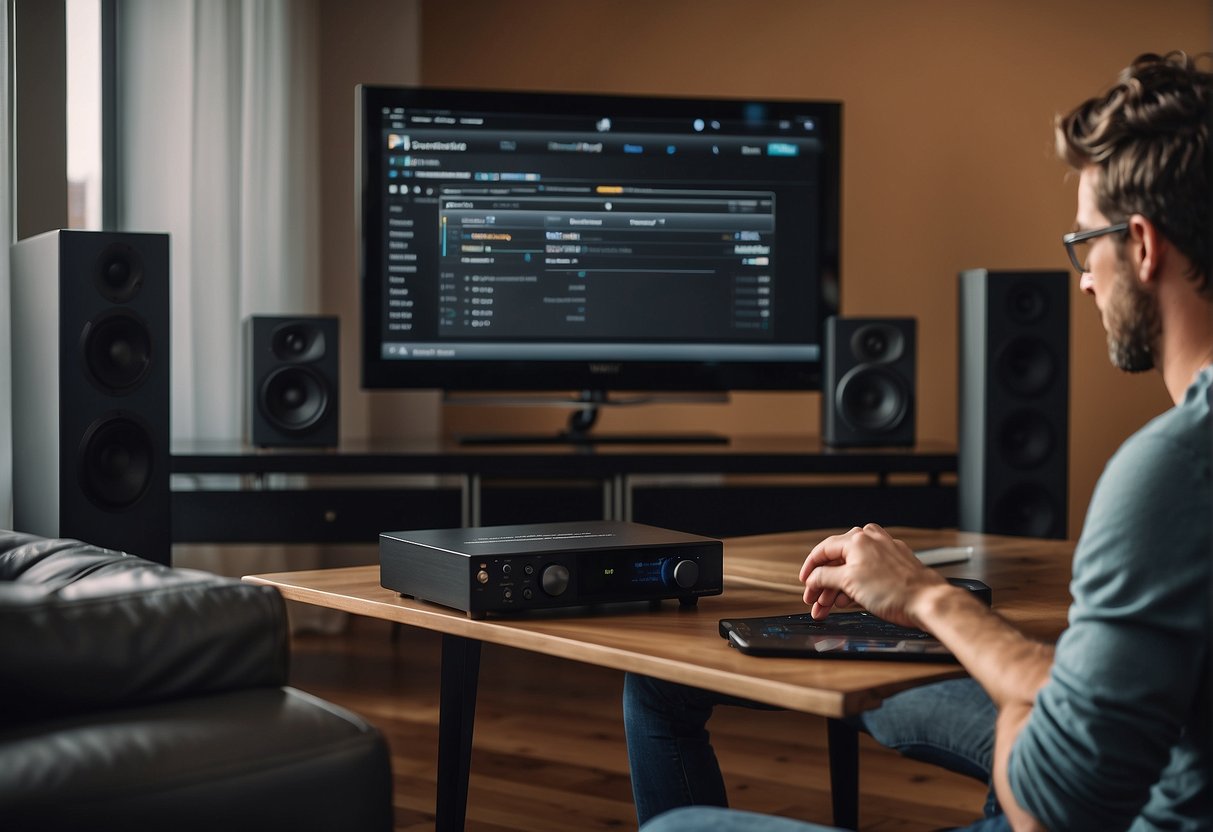
Investing in a wireless surround sound system for a TV requires balancing the initial cost against the overall quality and longevity of the system. Consumers should consider both budget-friendly options and systems that offer long-term value.
Cost-Effective Choices
When budget is a primary concern, consumers should look for wireless surround sound systems that provide good sound quality at a lower price point.
Brands like Vizio and TCL offer systems that can cost significantly less than premium models, yet still, enhance the audio experience of a home theater.
- Under $200: Entry-level systems; may lack advanced features.
- $200-$500: Mid-range options; blend of quality and affordability.
Long-Term Value
Investing more initially for a wireless surround sound system can yield savings over time, as higher-end systems typically feature better build quality, sound fidelity, and technological advancements.
Systems like the JBL Bar 5.1 Soundbar can transform a viewing experience, offering crisp audio and durability that may eliminate the need for frequent replacements.
- Superior Components: Ensures longevity and quality performance.
- Advanced Technology:
- Models like the Sony ST5000 can significantly enhance the cinematic experience with features like Dolby Atmos.
Installing and Maintaining Your System
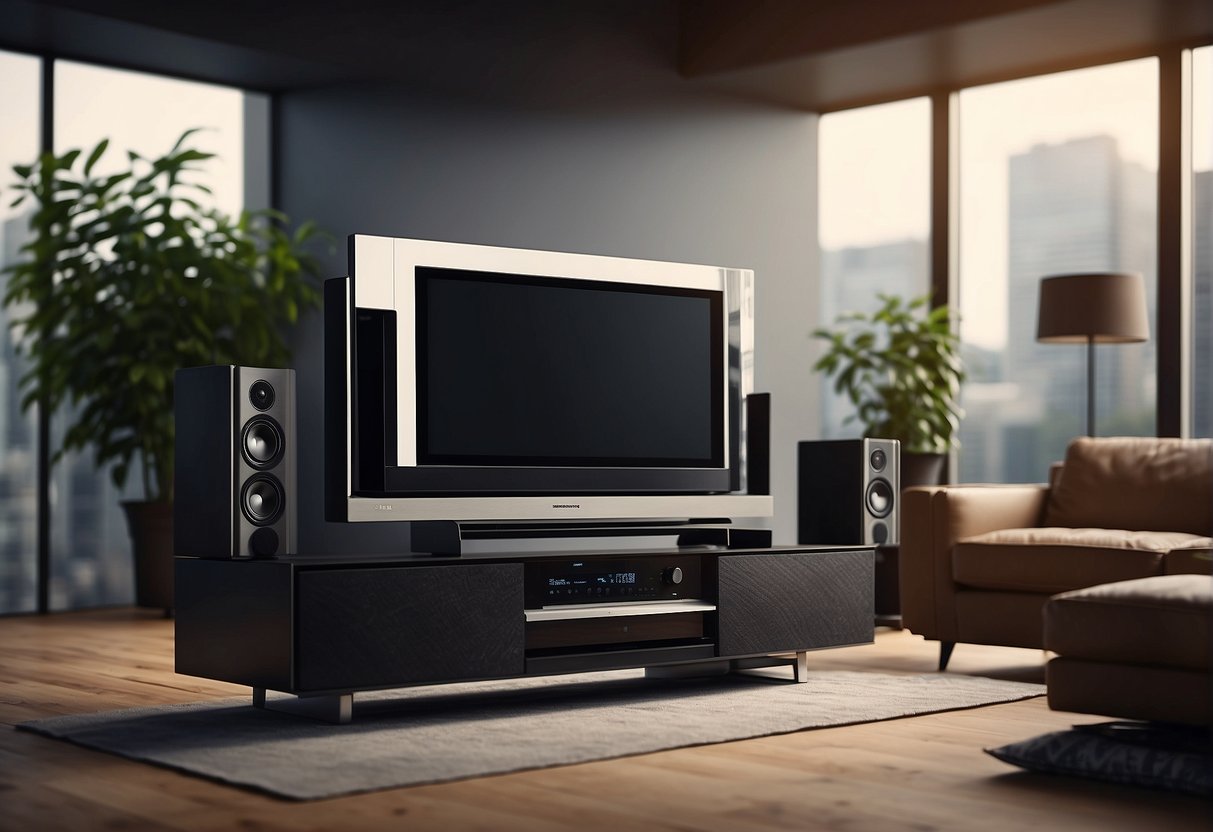
When setting up and caring for your wireless surround sound system, it’s crucial to adhere to specific steps and checks to ensure longevity and optimal performance. This involves regular maintenance and prompt troubleshooting.
Regular Maintenance for Optimal Performance
To maintain the quality and functionality of wireless surround sound systems, routine checks and actions are necessary.
Users should verify that all components are connected to an appropriate power outlet and inspect battery life for devices that are not wired.
For wireless surround systems, it’s essential to check the connection stability regularly, ensuring that the audio output remains uninterrupted and crystal-clear.
- Check for firmware updates to enhance performance and add new features.
- Clean speakers and subwoofer using a soft, dry cloth to prevent dust accumulation, which can degrade sound quality.
- Ensure that the system’s wireless connectivity is unobstructed by physical barriers or interference from other electronic devices.
Troubleshooting Common Issues
From time to time, users may encounter issues with their surround sound systems, but many of these can be resolved with simple fixes.
No Sound or Distorted Sound:
- Ensure all cables, if any (like coaxial), are firmly connected.
- Verify that the sound system is powered on and the mute function is not activated.
- Check the battery life of wireless devices and replace or recharge as needed.
Connectivity Problems:
- Restart the sound system and any connected devices to refresh the wireless connection.
- If using Bluetooth or Wi-Fi, remove obstacles or reorient the system to improve signal strength.
Frequently Asked Questions
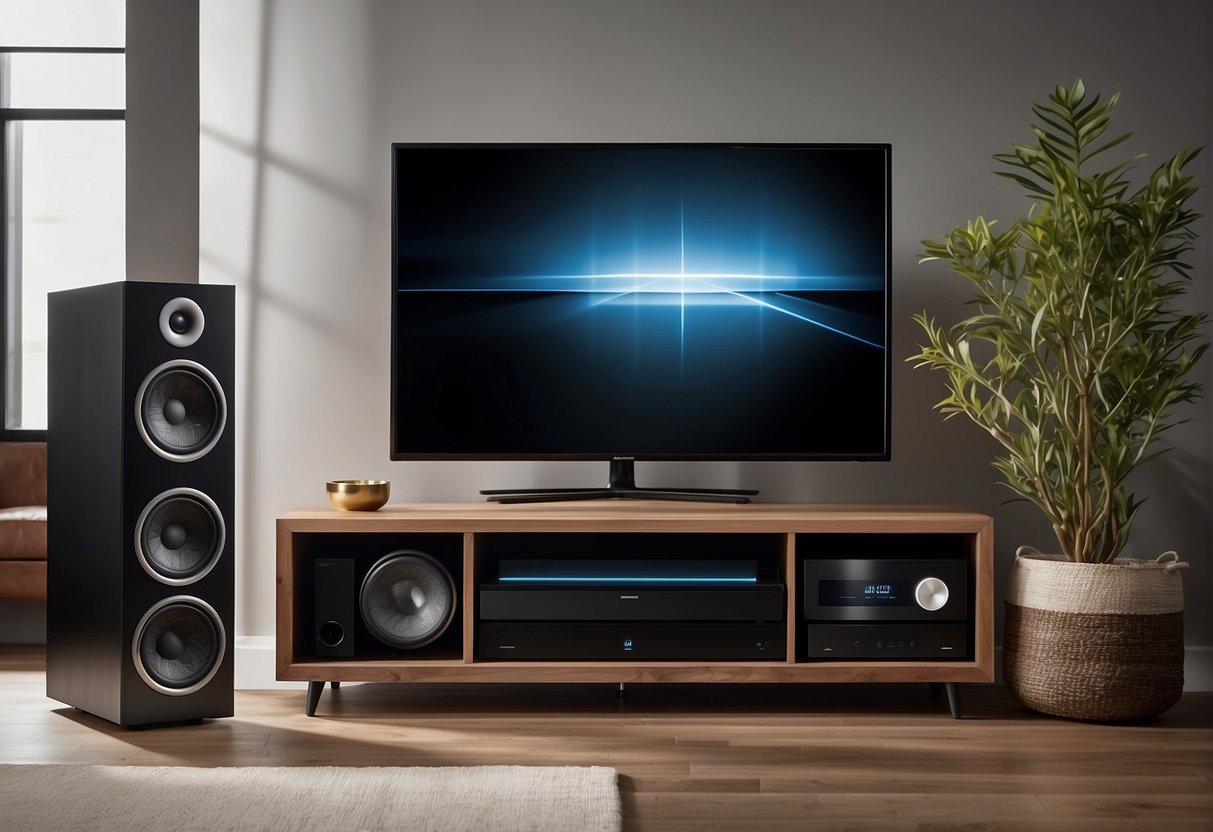
When it comes to enhancing one’s television with a wireless surround sound system, consumers frequently have questions about affordability, connection methods, the reality of a completely wireless setup, audio quality comparisons, and features to look for in receivers, as well as the differences between 5.1 and 7.1 systems.
What are the best options for a wireless surround sound system within a budget of $500?
Within a $500 budget, the consumer can look at quality but affordable systems like the Vizio SB3651-E6 or the Yamaha YHT-4950U, which provide a balance between cost and performance in a wireless surround sound setup.
How does one connect a wireless surround sound system to a television?
To connect a wireless surround sound system to a TV, one typically uses a wireless transmitter that connects to the TV’s audio output. The transmitter sends the audio signal to the wireless speakers, which usually require a power source but do not need a direct cable connection to the TV.
Are there any completely wireless surround sound systems available for TVs?
Yes, there are completely wireless surround sound systems for TVs, such as the Sonos 5.1 Surround Set. This system uses Wi-Fi to connect to TV and other devices and offers a true wireless experience with no need for speaker cables.
Can wireless speakers deliver the same audio quality as wired systems?
Wireless speakers can deliver high-quality audio comparable to wired systems, especially with advancements in technology like Wi-Fi and Bluetooth. However, audio quality can be influenced by factors like the audio source, compression, and interference.
What should one look for in a wireless surround sound system receiver?
When choosing a wireless surround sound system receiver, one should look for compatibility with current audio standards such as Dolby Atmos, connectivity options such as HDMI ARC, and multiple input options for versatility with other devices.
Is there a difference in sound quality between a 5.1 and a 7.1 wireless system?
The difference between a 5.1 and a 7.1 wireless system primarily lies in the number of speakers and placement, which affects the surround sound experience.
A 7.1 system can offer a more immersive sound with additional rear speakers, enhancing the directional quality of the audio compared to a 5.1 setup.

